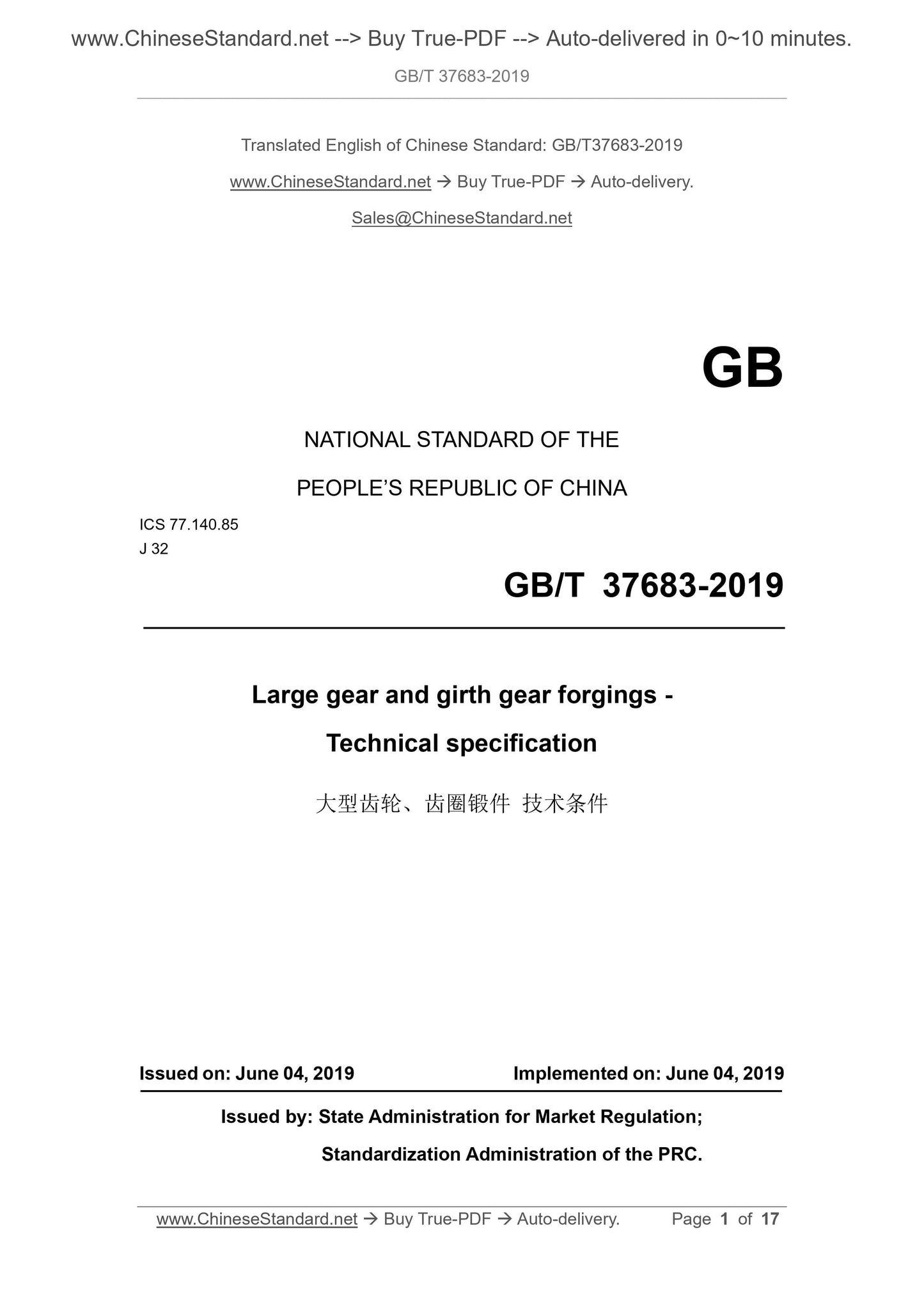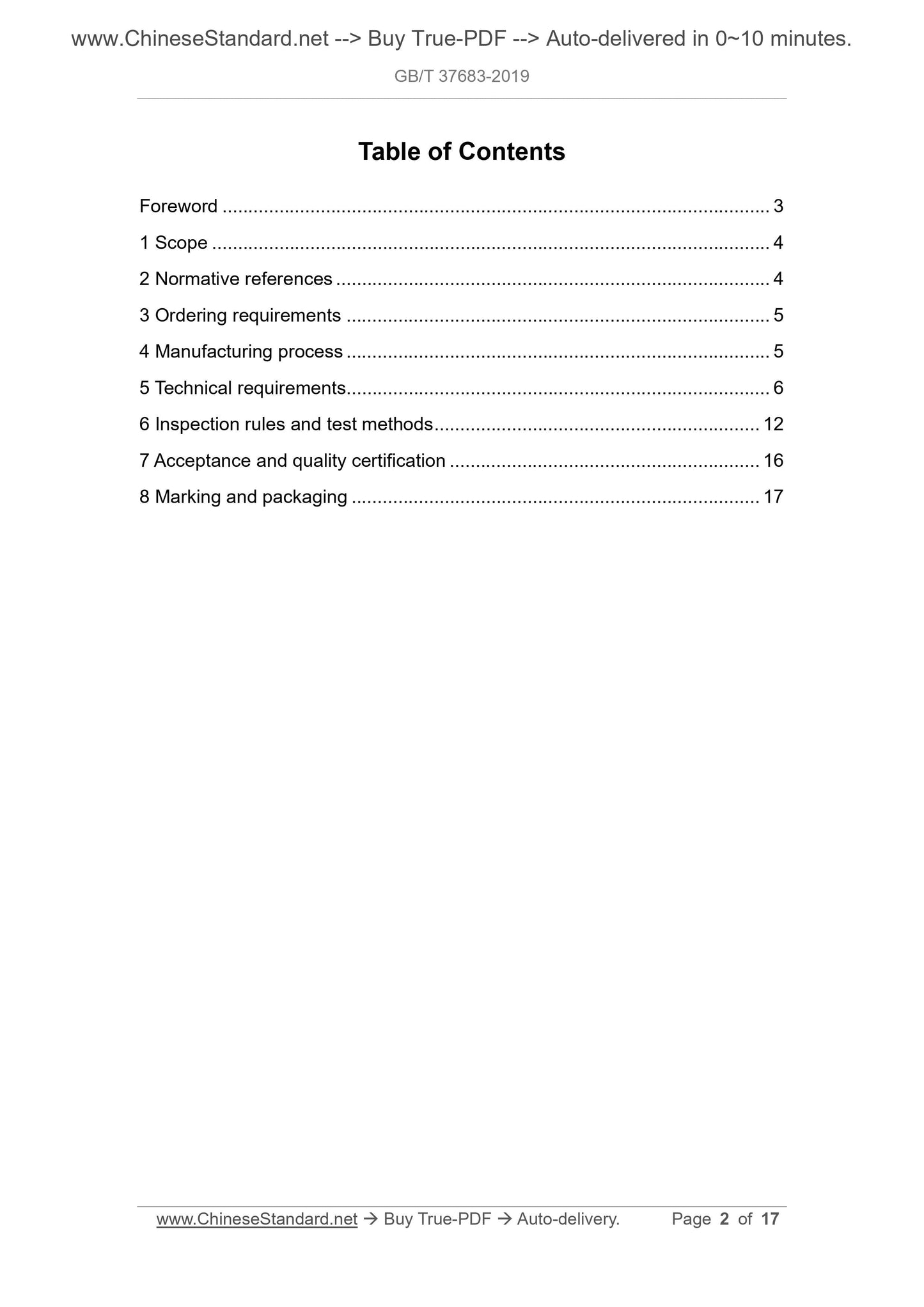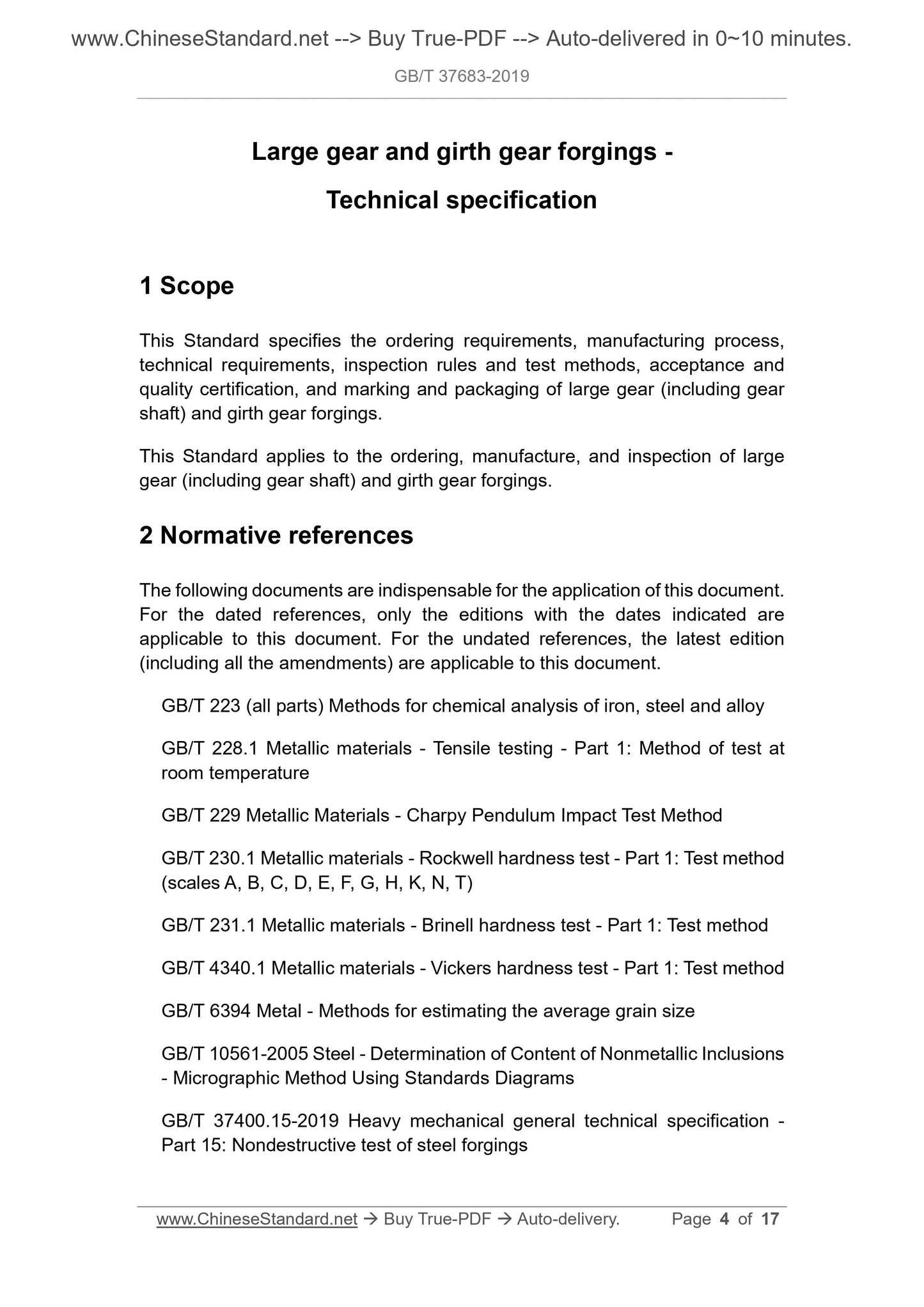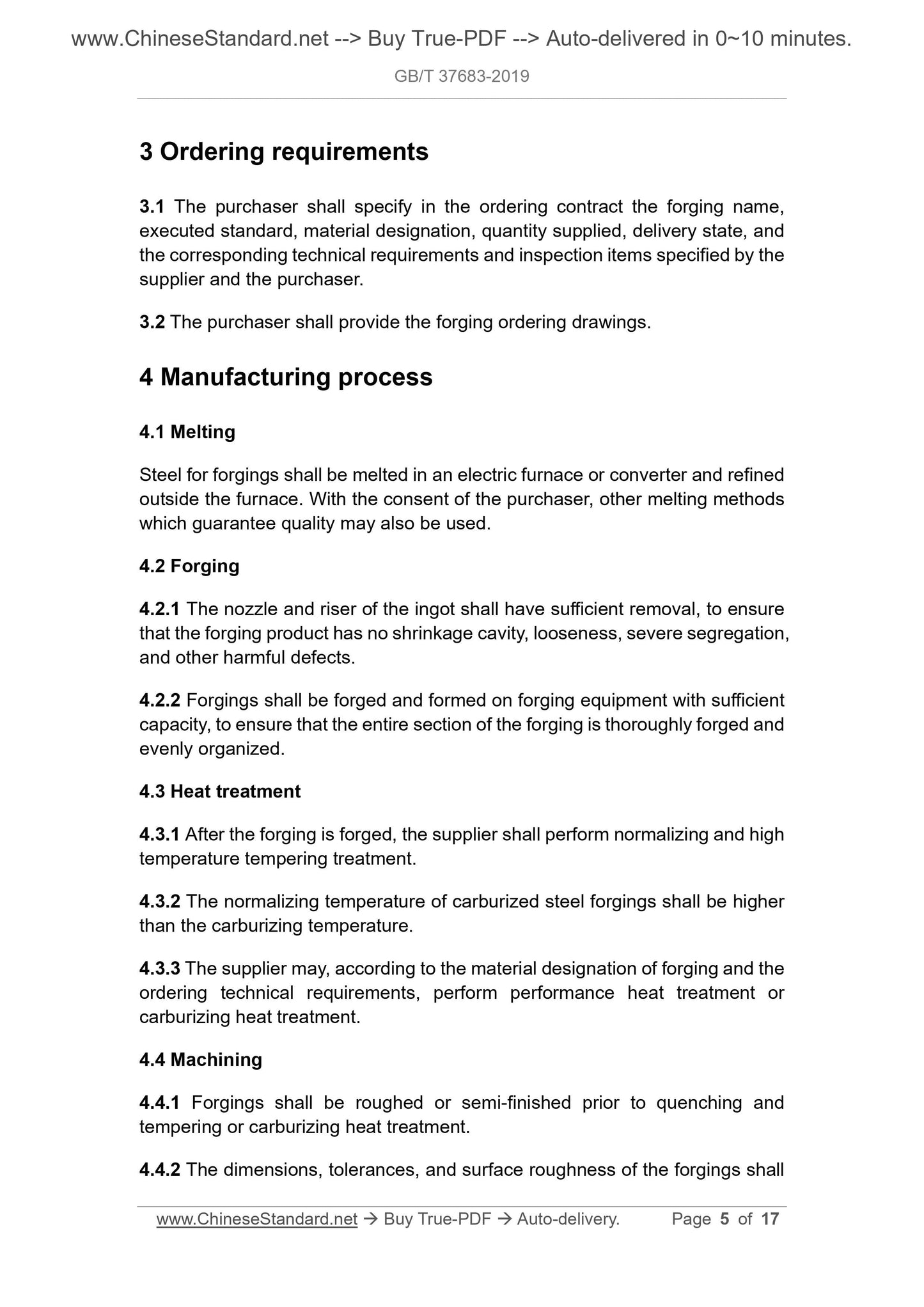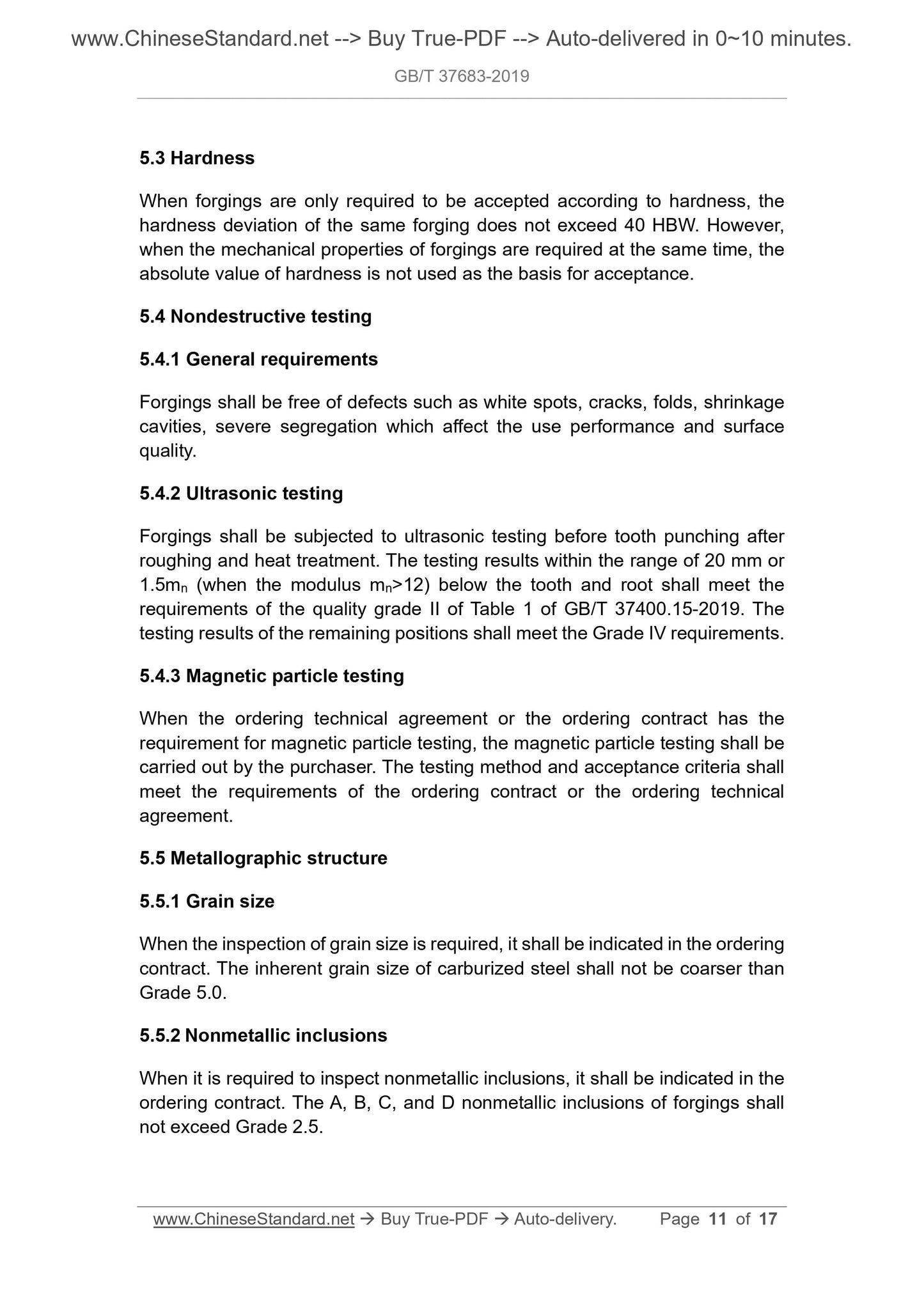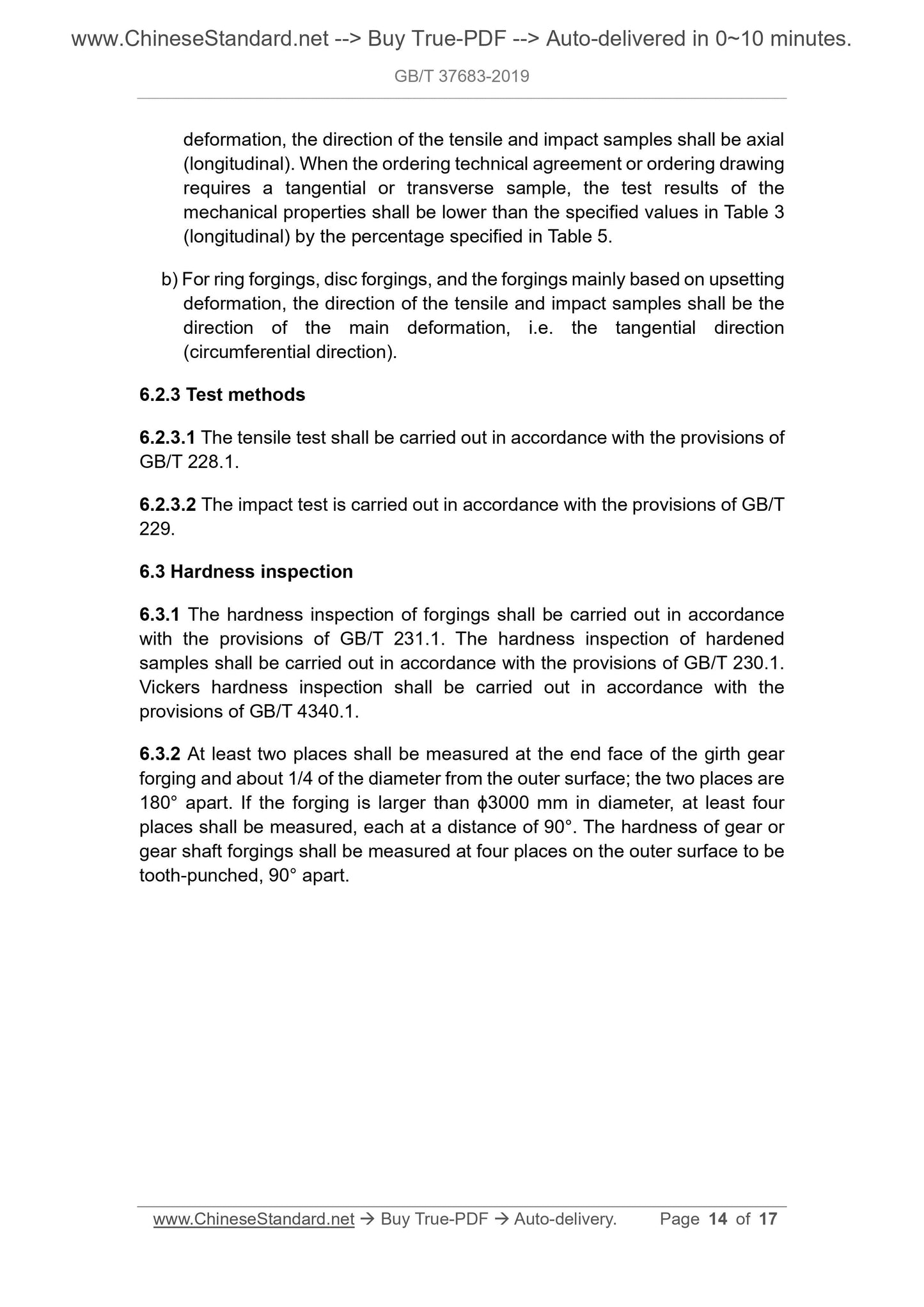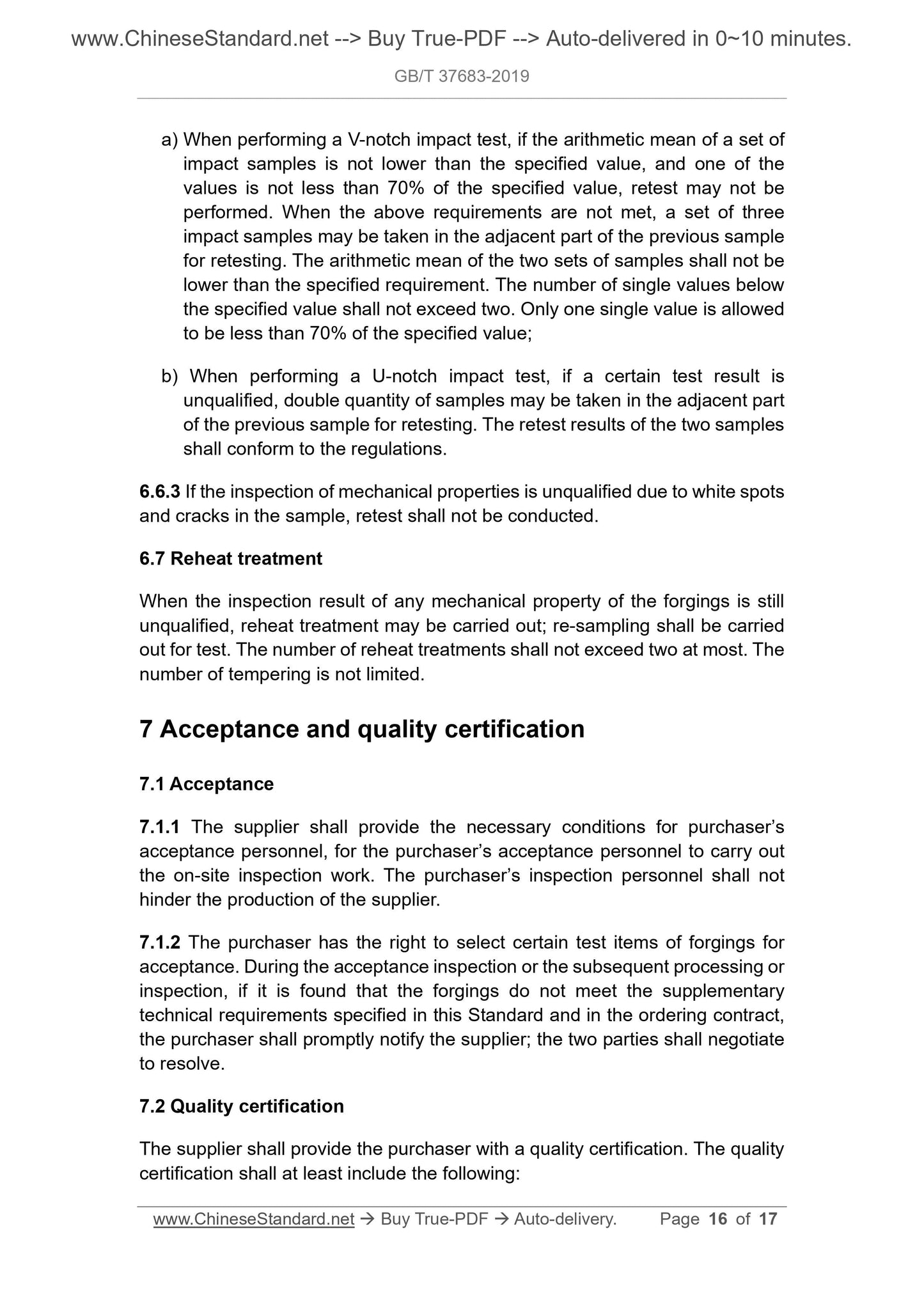1
/
of
7
www.ChineseStandard.us -- Field Test Asia Pte. Ltd.
GB/T 37683-2019 English PDF (GB/T37683-2019)
GB/T 37683-2019 English PDF (GB/T37683-2019)
Regular price
$150.00
Regular price
Sale price
$150.00
Unit price
/
per
Shipping calculated at checkout.
Couldn't load pickup availability
GB/T 37683-2019: Large gear and girth gear forgings - Technical specification
Delivery: 9 seconds. Download (and Email) true-PDF + Invoice.Get Quotation: Click GB/T 37683-2019 (Self-service in 1-minute)
Newer / historical versions: GB/T 37683-2019
Preview True-PDF
Scope
This Standard specifies the ordering requirements, manufacturing process,technical requirements, inspection rules and test methods, acceptance and
quality certification, and marking and packaging of large gear (including gear
shaft) and girth gear forgings.
This Standard applies to the ordering, manufacture, and inspection of large
gear (including gear shaft) and girth gear forgings.
Basic Data
| Standard ID | GB/T 37683-2019 (GB/T37683-2019) |
| Description (Translated English) | Large gear and girth gear forgings - Technical specification |
| Sector / Industry | National Standard (Recommended) |
| Classification of Chinese Standard | J32 |
| Classification of International Standard | 77.140.85 |
| Word Count Estimation | 14,128 |
| Date of Issue | 2019-06-04 |
| Date of Implementation | 2019-06-04 |
| Issuing agency(ies) | State Administration for Market Regulation, China National Standardization Administration |
Share
